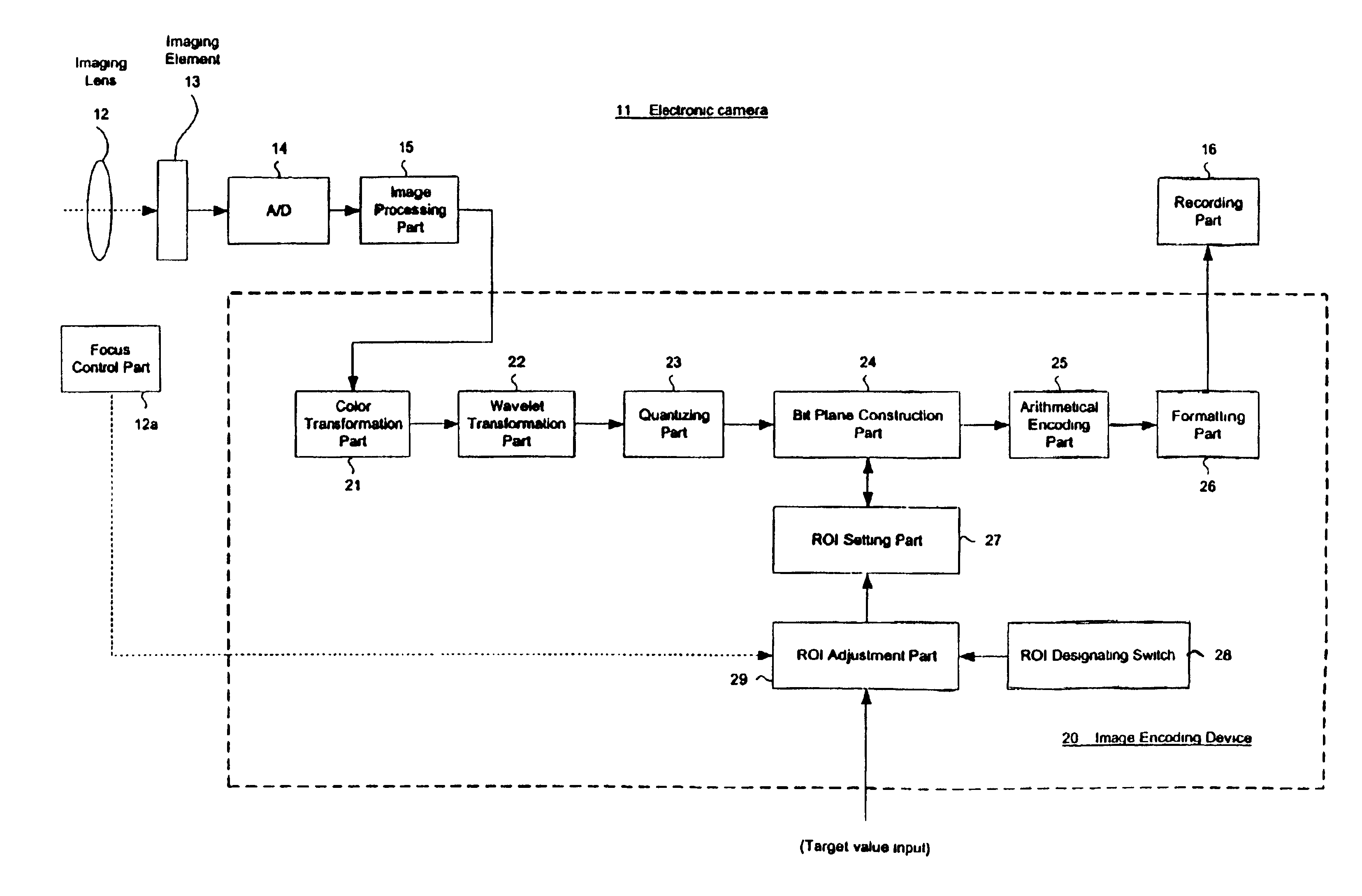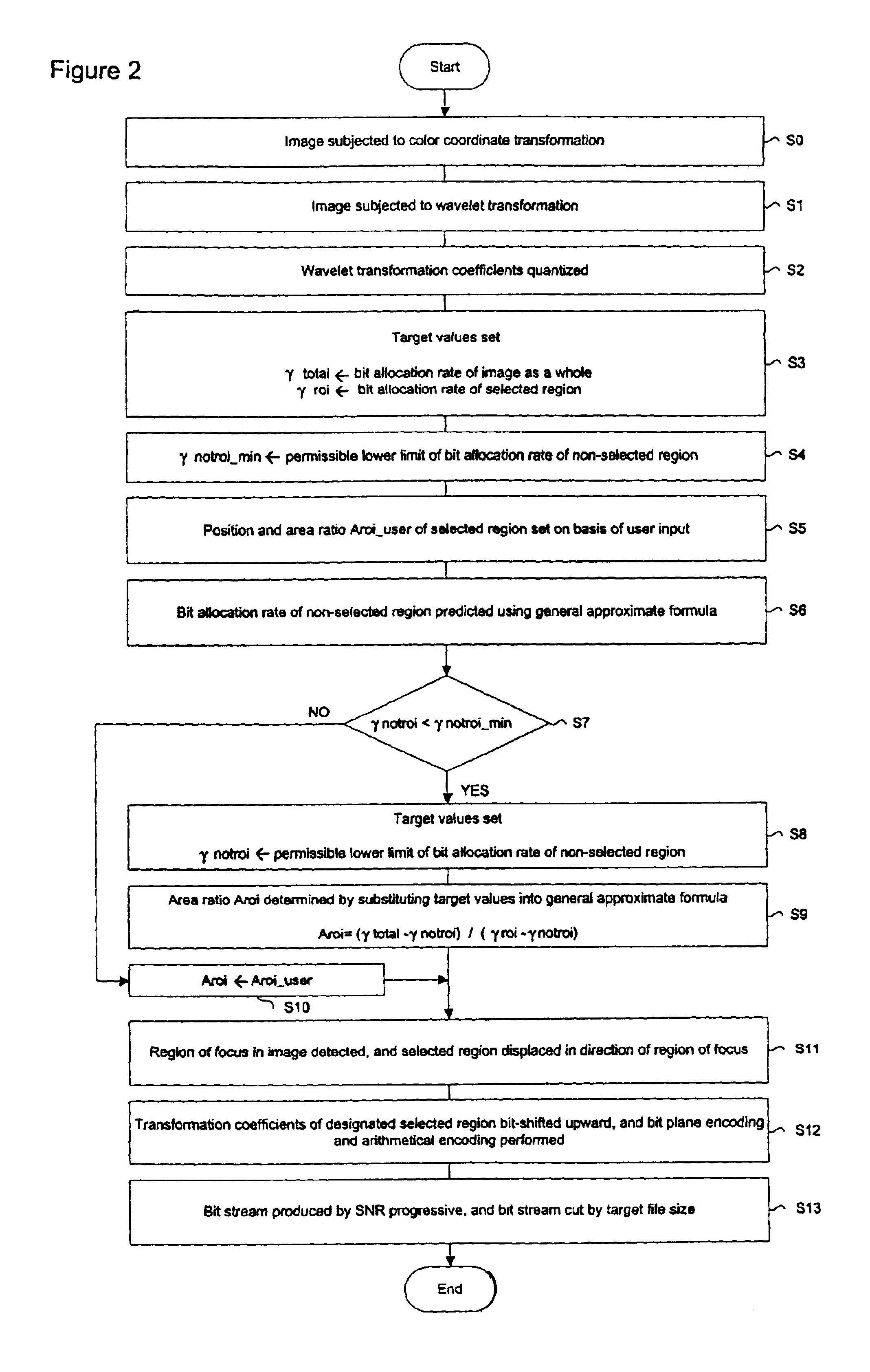Image encoding device, electronic camera and recording medium for image encoding program
- Summary
- Abstract
- Description
- Claims
- Application Information
AI Technical Summary
Benefits of technology
Problems solved by technology
Method used
Image
Examples
Embodiment Construction
Working configurations of the present invention will be described below with reference to the attached figures.
The first working configuration is a working configuration of an electronic camera.
FIG. 1 is a block diagram which illustrates the construction of an electronic camera.
In FIG. 1, an imaging lens 12 is mounted on the electronic camera 11. The imaging plane of an imaging element 13 is disposed in the imaging space of imaging lens 12. The focus of imaging lens 12 is automatically controlled by a focus control part 12a, so that an image of the object of imaging is focused on the imaging plane of imaging element 13. Imaging element 13 subjects the image of the object of imaging to a photoelectric conversion, and outputs the result as an image signal. This image signal is digitized via an A / D converter part 14, and is then sent to an image processing part 15. Image processing part 15 performs image processing such as gradation conversion, black level correction and color interpol...
PUM
 Login to View More
Login to View More Abstract
Description
Claims
Application Information
 Login to View More
Login to View More - R&D
- Intellectual Property
- Life Sciences
- Materials
- Tech Scout
- Unparalleled Data Quality
- Higher Quality Content
- 60% Fewer Hallucinations
Browse by: Latest US Patents, China's latest patents, Technical Efficacy Thesaurus, Application Domain, Technology Topic, Popular Technical Reports.
© 2025 PatSnap. All rights reserved.Legal|Privacy policy|Modern Slavery Act Transparency Statement|Sitemap|About US| Contact US: help@patsnap.com



